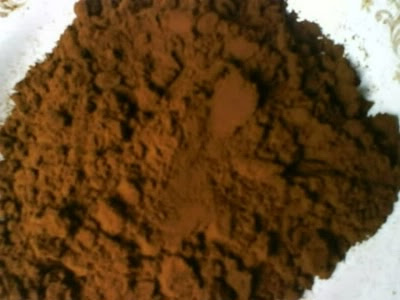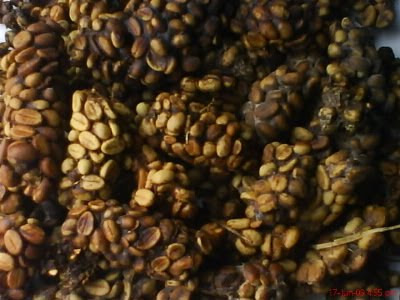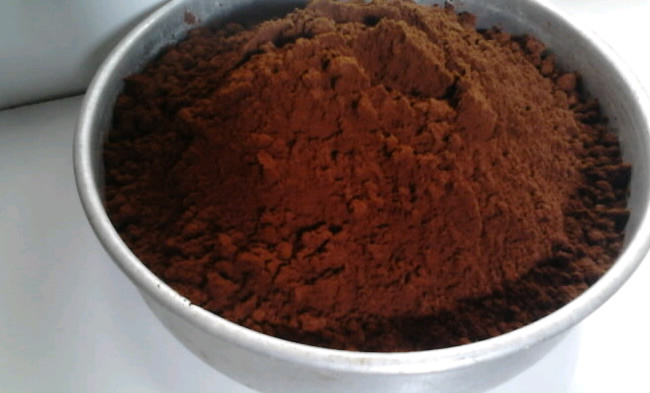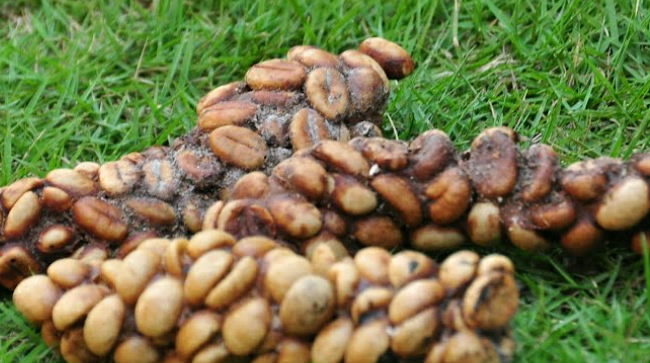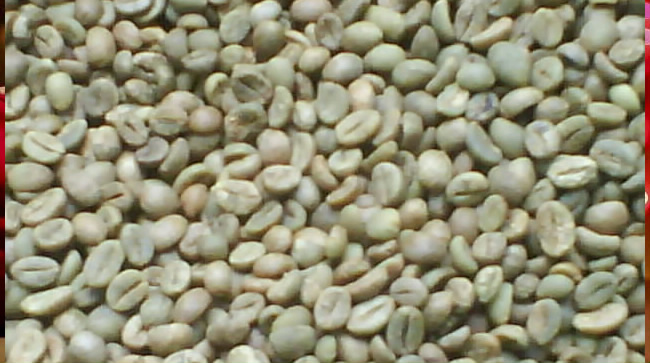Jenis luwak banyak macamnya, ada yang kecil dan ada yang besar, ini salasatu jenis luwak yang ada di kebun binatang, di hutan sangat sulit menemukan luwak karena biasanya luwak keluar di malam hari, sedangkan siang hari biasanya tidur di semak-semak atau di atas kayu tinggi,
original civet coffee is coffee beans that have been eaten by civet / civet coffee is a steeping drink derived from the process of extracting and processing coffee beans. The word coffee comes from Arabic: ﻗﻬﻮﺓ qahwah which means strength, because in the beginning coffee was made as a high-containing food. The word qahwah besemah kawe again experienced a change to kahveh derived from Turkish and then changed to koffie (Dutch). The use of the word koffie is absorbed into Indonesian into the word coffee as it is today. In general, there are two types of coffee beans, the well-known robusta and arabica. History records the discovery of coffee into an energy drink and was the first efficacious by the Ethiopians on the African continent around 3000 years a thousand years BC. then continues to grow until now it has become one of the top drinks in the world and is consumed by various groups of people. The Indonesian state itself can produce more than 400 thousand tons per year. In addition to its pleasant aroma and taste, coffee can also reduce the risk of developing cancer, gallstones, diabetes and various cardiovascular diseases. Early history of Africa The era of the discovery of coffee beans since around 800 BC Other opinions say 850 AD At that time, people in the African Continent, especially Ethiopia, who consumed coffee beans mixed with grapes and animal fat to meet the energy needs of the body and protein . His discovery itself happened accidentally when a shepherd named Khalid, a person from Abyssinia, observed that the herds of goats that he grazed remained awake even after nightfall after eating a kind of bery. Then he tried to cook then eat it. These habits continue to grow and then spread to various African countries, but the method of presentation is still using conventional methods. Over the next several hundred years coffee beans began to be brought through the Red Sea and arrived in Arabia with a new serving method. The spread of coffee in Arab countries which had a more advanced civilization than the Africans at that time, not only cooked coffee beans, but also boiled them to take the juice. In the 13th century, Muslims consumed a lot of these coffee drinks so that worshipers stayed awake. The popularity of coffee also increased along with the spread of Islam at that time until it reached the regions of North Africa, India and the Mediterranean. At this time, there is no cultivation of coffee plants outside the Arab region because the Arabs always export infertile coffee beans that are infertile by cooking it and drying it first. This resulted in the cultivation of coffee plants is not possible. After the 1600s, a pilgrim from India named Baba Budan succeeded in bringing fertile coffee beans out of Mecca and growing them in various regions outside the Arab region. Venice, including the city of coffee trade in the early era of the entry of coffee into Europe. Coffee reaching the European market was officially brought into Europe first in 1615 by a Venetian merchant. He got a supply of coffee beans from the Turks, but the amount was not enough to meet the market needs. By cool, Europeans began to cultivate themselves. The Netherlands was one of the first European countries to successfully cultivate coffee in 1616. Next in 1690, coffee beans were brought by the Dutch to Java to be cultivated on a large scale. At that time, Indonesia was still a Dutch colonial country. Reaching Martinique, France Around the year 1714, French King Louis XIV received a donation of coffee seeds from the Dutch as a complement to his collection at the Royal Paris Botanical Gardens, Jardin des Plantes. At the same time, a navy Gabriel Mathieu in Clieu wanted to bring from the tree to be brought to Martinique. However, this was rejected by Louis XIV and in return, he led several troops to sneak into the Jardin des Plantes to steal coffee plants. The success of Gabriel Mathieu in Clieu brought him to Martinique was a huge achievement. This is because the cultivation of coffee plants there is quite good. In just the 50th year, there have been approximately eighteen million coffee trees with diverse varieties. This progeny is one of the sources of the wealth of coffee plants in the world. Coffee flowers for Brazil In 1727, the Brazilian government took the initiative to reduce the market price of coffee beans in the area, because at that time coffee was still sold at high prices and only enjoyed by the elite. Therefore, the Brazilian government sent a special agent, Lieutenant Colonel Francisco de Melo Palheta, to sneak into France and bring some coffee seeds. Coffee plantations in France have strict safeguards so that is not possible. Palheta also looked for other ways by approaching the governor's wife. And the result of his hard work, he could bring home a bouquet of many coffee flowers which was given by the governor's wife after dinner. From these buds, the Brazilians succeeded in cultivating coffee plants on such a large scale that they can be consumed by the common people as of now, but now there is more expensive coffee in the world, Luwak coffee, if you need it you can order it here, the price is not so expensive, maybe only a third of the very famous price,

